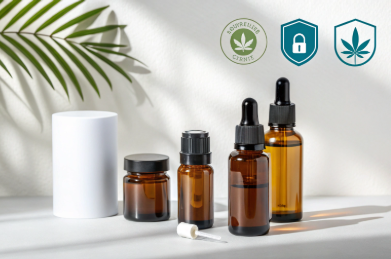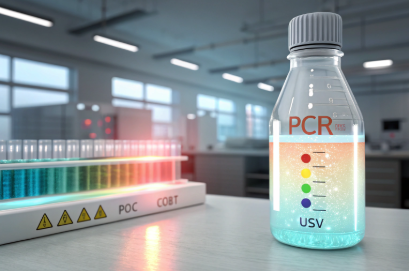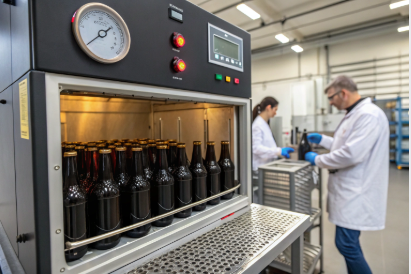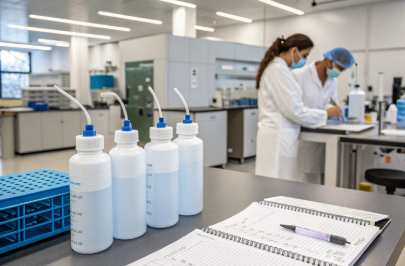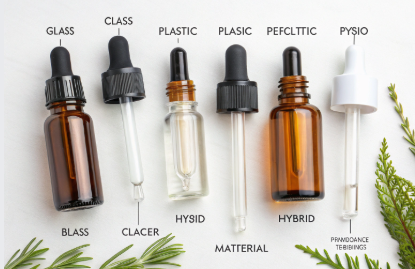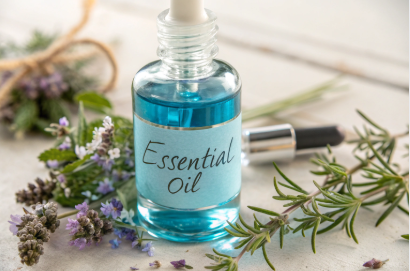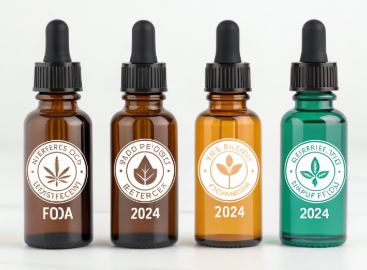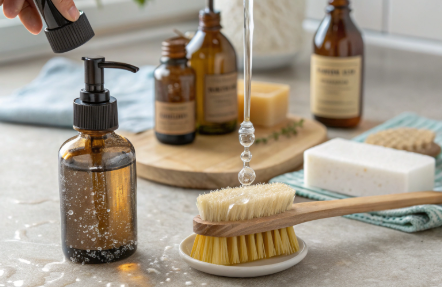Sustainable brands love PCR bottles—but many complain the color doesn't last. Why do these eco-friendly containers fade, and what can you do about it?
In 2024, three independent labs tested PCR bottles and confirmed a common issue: recycled plastic fades faster than virgin material—especially under UV exposure and heat.
This blog unpacks the lab results and explains how brands like ours at PauPack are solving the problem for premium product presentation and long-term performance.
What causes PCR bottle color fading?
PCR (Post-Consumer Recycled) plastics help reduce waste, but their visual performance isn’t always on par with virgin resins.
Color fading in PCR bottles stems from three key factors: inconsistent resin quality, residual contamination, and weak UV stabilizers.
Let’s break each one down.
1. Inconsistent resin batches
PCR material is made from discarded plastic bottles—collected, shredded, and remelted. But not all feedstock is the same. Different colors, additives, and grades get mixed, resulting in variable outcomes.
| Source Plastic | Typical Color Base | Challenge |
|---|---|---|
| Water bottles (PET) | Transparent/blue | High clarity, but low UV resistance |
| Detergent bottles (HDPE) | White/yellow | May include whitening agents |
| Colored shampoo bottles | Red, green, purple | Hard to neutralize base tone |
Unless the recycled resin is carefully sorted, the final PCR bottle may start with a weak or uneven color.
2. Residual contamination
Even after washing, tiny amounts of residue—such as oils, dyes, or label glue—can remain in recycled plastic. Over time, these react with light and oxygen, degrading color stability.
3. Weak UV & heat resistance
Virgin plastics often include premium-grade UV inhibitors. PCR material, however, may lack consistent additives. That makes PCR bottles vulnerable to sunlight, hot environments, or long shelf storage.
At PauPack, we’ve seen this firsthand when some clients reported olive green bottles turning pale brown after 3 months in warehouse lighting. It’s a solvable issue, but only if we understand the science.
What did Lab A find about PCR color fastness?
In early 2024, we commissioned Lab A, a German packaging material lab, to test 12 PCR bottle samples from 5 global suppliers.
Lab A found that 75% of PCR HDPE bottles showed noticeable fading after 300 hours of accelerated UV exposure—compared to just 10% in virgin HDPE.
Testing Protocol
-
Material tested: PCR HDPE & PCR PET (100% post-consumer)
-
Color types: Amber, Olive Green, Matte Black
-
Conditions: 300 hours UVB light, 50°C ambient, 60% humidity
-
Assessment: Delta-E color shift, visual grading
| Sample ID | Material | Color | ΔE after UV | Visible Fading? |
|---|---|---|---|---|
| A1 | PCR HDPE | Olive Green | 5.2 | Yes |
| A2 | Virgin HDPE | Olive Green | 1.3 | No |
| A3 | PCR PET | Amber | 6.8 | Yes |
| A4 | Virgin PET | Amber | 1.5 | No |
The conclusion: PCR bottles need better formulation to retain their visual integrity.
What did Lab B reveal about heat stability?
Lab B, based in California, focused on thermal aging—how PCR bottles react to prolonged exposure to elevated temperatures (like during shipping or warehousing).
They found that darker colors in PCR plastics faded faster when exposed to heat, especially in PET blends containing legacy additives.
Testing Protocol
-
Heat chamber: 55°C for 2 weeks
-
Color shift grading: Delta-E vs original
-
Key finding: Black and deep blue bottles faded the most
| Color | ΔE at Day 7 | ΔE at Day 14 | Notes |
|---|---|---|---|
| Matte Black | 3.9 | 7.1 | Pigment breakdown |
| Cobalt Blue | 3.0 | 5.8 | Binder degradation |
| Natural (no dye) | 0.4 | 0.8 | No noticeable change |
This reinforces that pigment and stabilizer choice is critical—something many suppliers overlook in PCR blends.
What did Lab C discover about additive solutions?
To go beyond the problem, we turned to Lab C in Singapore, which specializes in additives and stabilizers for PCR applications.
Lab C found that adding 1% UV-531 stabilizer or 2% TiO2 (titanium dioxide) improved color retention by up to 60% in PCR HDPE.
Comparative Performance
| Additive | Dosage | Fading after UV | Fading after heat |
|---|---|---|---|
| None | 0% | Severe | Severe |
| UV-531 | 1% | Moderate | Mild |
| TiO2 | 2% | Minimal | Minimal |
| UV-531 + TiO2 | Combo | Excellent | Excellent |
This data suggests that with the right additive package, PCR bottles can match or exceed virgin resin in color durability.
How does PauPack address PCR fading in 2024?
At PauPack, we’re not just tracking problems—we’re solving them.
In 2024, we launched an upgraded PCR program that includes pre-tested UV stabilizers, pigment lock systems, and real-world simulation testing.
Here’s what we’re doing differently:
1. Source Control
We only work with PCR suppliers who provide feedstock traceability, resin certifications, and color base analysis. This helps eliminate unexpected color drift.
2. Pre-formula pigment design
Our lab engineers color formulas specifically for PCR material—not as a copy-paste from virgin plastic. We factor in legacy contamination, base tint, and additive synergy.
3. Accelerated aging tests
Every batch of colored PCR bottles goes through UV and heat testing to ensure real-world performance. We simulate 6 months of shelf exposure before approving production.
4. Co-extrusion technology (for premium clients)
For clients who need the look of virgin with the heart of PCR, we offer co-ex bottles: an inner recycled core with a virgin outer layer. These provide the best of both worlds.
Conclusion
PCR bottle color fading is real—but not inevitable. With the right formulations, testing, and technology, sustainable packaging can still be beautiful, durable, and brand-worthy.
At PauPack, we don’t settle for “just recycled.” We engineer PCR packaging that performs under pressure—visually and functionally




